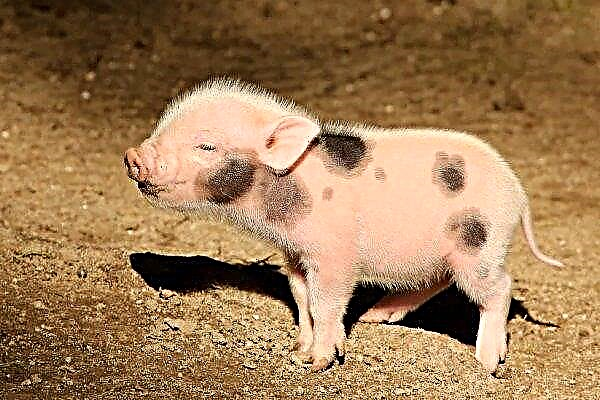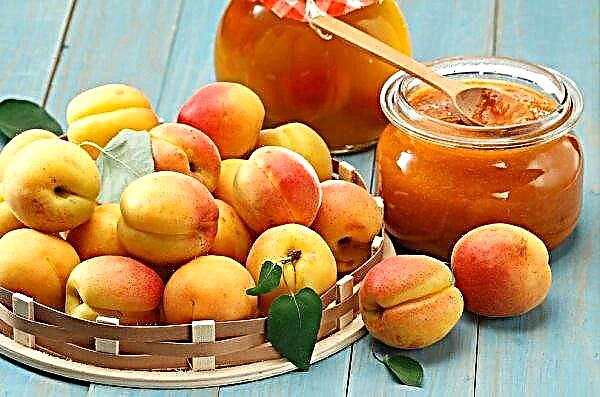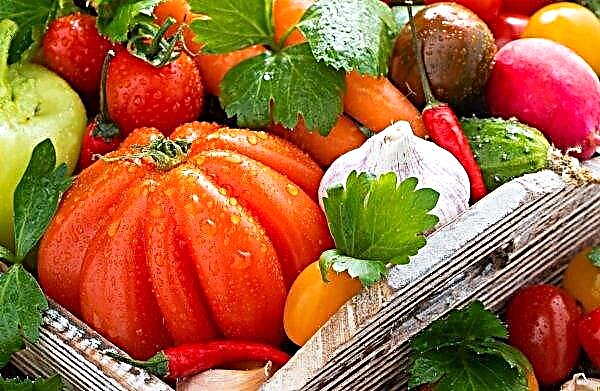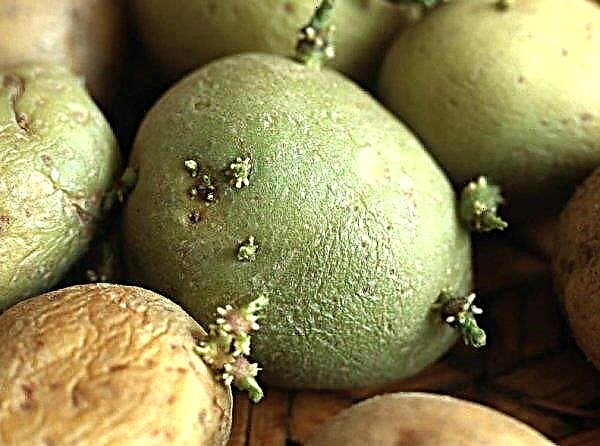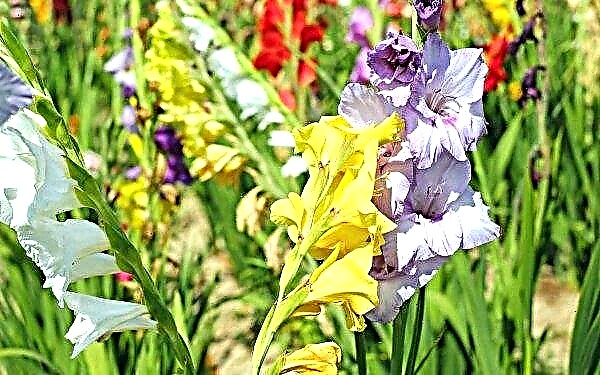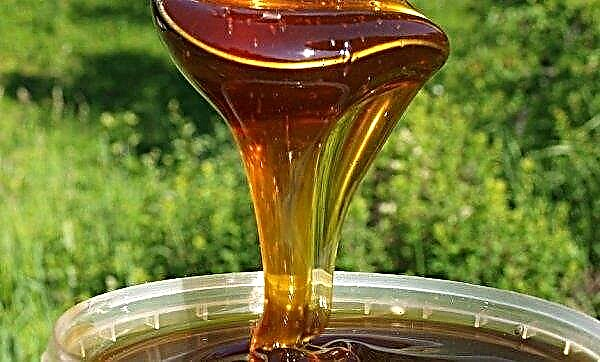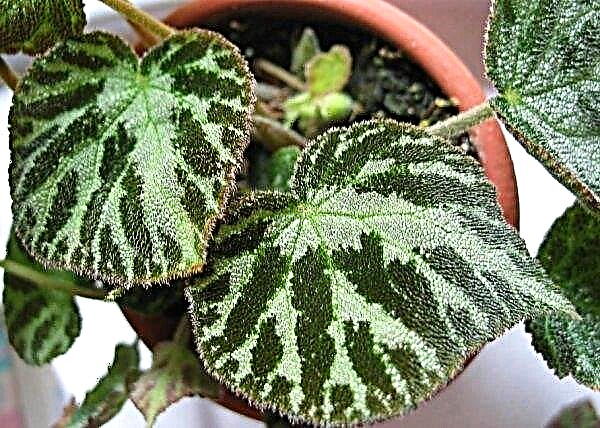Pink Diamond panicle hydrangea is a deciduous bush of a beautiful shape, rather large in size, with lush inflorescences. Such a plant will be an adornment of any garden. Characteristic features of the variety are high decorativeness, incredible flowering, rapid growth, endurance and unpretentiousness. About how to cultivate Pink Diamond hydrangea, what is the care of the plant, how to revive the garden design with it, later in the article.
Variety description Pink Diamond
Pink Diamond translated from English means "pink diamond." Pink Diamond is attributed to panicled species of hydrangeas. The Latin name for the variety is Hydrangea Paniculata Pink Diamond. The bush begins to bloom at the age of four.
Description of the bush:
- The plant can reach a height of two meters and grow almost 2–2.5 meters wide. During the year, the shoots become 20-30 cm longer.
- Straight, densely spaced branches and powerful reddish-brown stems form a neat, rounded crown of shrubs that do not fall apart after rain.
- The shape of the leaves is ellipsoidal, finely serrated at the edges. Color - saturated, dark green, matte. The texture is rough, dense. Length - about 12 cm.
- On the tops of the stems of the current year, numerous inflorescences are formed in the form of large, wide-pyramidal, densely hairy, openwork panicles, up to 30 cm long. They consist of very fragrant and honey-bearing flowers of two kinds. Sterile are larger, with a diameter of about 2.5 cm. First, the color of the four petals of the flower is cream or white. Later they acquire a dark pink hue, then become almost red. Fruit flowers are small. They are painted white with a lemon tint, the petals fall off early. The flowering period is long: it begins in mid-June and ends at the end of September.
- Many small seeds are formed in a 3 mm box.
- The roots are characterized by a shallow occurrence, the diameter of their distribution significantly exceeds the size of the aerial part of the plant.
Use in garden landscaping
Color-changing hydrangea inflorescences will revive any landscape. The culture is used both as a tapeworm and as part of a group planting: a tree-shrub or composition with grassy and evergreen plants. Allocate a place for hydrangea in the front garden with a diameter of up to 2 m on the north side of the site. The bush will perfectly decorate the entrance to the courtyard. Hydrangea among flowering and ornamental deciduous bushes will create a bright colorful landscape landscape composition.
When placing Pink Diamond in mixborders, neighboring plants with the same requirements for moisture, lighting and soil acidity are selected. Use combinations with hosts, astilbe, cuffs. If the mixborder area is large, then a combination of three or more hydrangea shrubs will be successful. Their natural spreading shape creates an accent of landscape composition in the form of unique waves that beautifully emphasize the size of the border.
Did you know? In the eighteenth century, the French botanist Philibert Commerson called the lush flowering shrub "hydrangea." This word comes from the Latin "hortus" — garden.
Greenery of coniferous plants - a wonderful background for air hydrangea hats of various tones. Spectacular is a group that combines hydrangea and plants with red leaves. The variety is used for landscaping city parks, squares, streets, courtyards near multi-storey buildings, creating expressive hedges.
A combination of Pink Diamond and other varieties of panicled pink hydrangeas will look spectacular. Creamy-white Kyushu inflorescences perfectly complement Pink Diamond hydrangea in a beautiful, airy composition.

Landing
The advantage of the Pink Pink Diamond hydrangea variety is its durability. Known specimens that have lived in one place for about 60 years. A transplant for mature hydrangea is undesirable, therefore, planning the size of the place for planting a bush is necessary taking into account the ability of the plant to grow by 2–2.5 m in width.
Place for hydrangea
“Pink Diamond” is a light-loving plant, however, exposure to direct sunlight is detrimental to it: growth and development slows down, inflorescences form small and lose their decorativeness, the bush becomes susceptible to disease.

The most optimal option would be a place in partial shade. If the site is open, well-lit, then it is necessary to take care of protecting the plant from ultraviolet sunlight in the afternoon. The place should be free of drafts. Hydrangea is characterized by an increased need for moisture, so it is not recommended to plant a bush near a fruitful tree or plant that absorbs large amounts of water. If Pink Diamond is already growing in such a place, then it should be watered more often.
Did you know? Title «Hydrangea» from ancient Greek is translated as “a vessel with water”. This name of the hydrangea shrub is associated with the shape of the box-shaped fruit in the form of a jug and the moisture-loving nature of the plant.
Soil preparation
Hydrangea Pink Diamond is able to adapt well to soils with different particle size and acidity. The presence of lime, ash, chalk, dolomite flour and other deoxidants in the soil negatively affects the development of the plant. The bush will grow well on fertilized, drained, fertile, loose, moist soil, acidity (pH) which should be 4-6.5 units.
If the soil is alkaline, then it is acidified with peat, leaf compost or using rotted fallen needles. Chemicals are also used for this purpose: ammonium nitrate or 5 g of citric acid per bucket of water. The site before planting is dug up, fertilized, weeds are removed.

Landing time
In the northern latitudes of the country, young plants are planted in open ground in spring. During the summer period, seedlings will have time to take root and gradually adapt to the approach of winter. An additional shelter will be an additional protection of the young plant in the cold season. Further south you can land in the fall.
Landing process
After acquiring a seedling with an open root system, it is advisable to plant it immediately. If this is not possible, the bush must be stored in a dark, cool room. Preparing a seedling for planting consists in removing dry or elongated roots and cutting 3-4 buds at annual growths. If the procedure is carried out in the fall, then it is undesirable to shorten the shoots. It is recommended to lower the roots of the shrub into the liquid with the addition of a growth stimulator, for example, “Heteroauxin,” for 5–20 hours. This technique prevents stress on the seedling and increases the likelihood of its quick survival.

Then prepare the landing pit. The recommended dimensions of the recess are 30 × 30 × 30 cm. The bottom of the pit is covered with any available drainage. Humus, sheet soil, peat and sand are added to the depression in a ratio of 2: 2: 1: 1. At the next stage, you should form a small hill, moisten it a little, place the root of the young plant on top and cover it with earth, compacting it so that there are no voids. The root neck is not buried, it should be located at the level of the soil after subsidence. Having planted a plant, it must be watered with soft water.
Important! The optimal distance between two bushes should be equal to the width of an adult plant, i.e. 2–2.5 m.
Care
Hydrangeas of this variety are regularly watered, mulch the trunk circle, fed, sprayed to prevent diseases and, if necessary, establish shelter for the winter. It is also important to timely remove weeds and loosen the soil.
It is useful to trim numerous shoots in a timely manner so that nutrients are evenly distributed throughout the bush. As a result, the number of large inflorescences will not be reduced.
Video: Pink Hydrangea panicled Hydrangea
Watering and feeding
Pink Diamond Hydrangea does not need much moisture compared to other panicled varieties. Moderate watering will be sufficient. If there is no rainfall, then the bush should be moistened every week, spending from 15 to 20 liters of water per plant. In rainy weather, the number of irrigations is reduced to once a month. For the strength of the shoots, it is recommended to moisten the plant in the morning and evening under the root, adding a little potassium permanganate to the settled, warm water to get a weak solution.
Hydrangea Pink Diamond is responsive to feeding:
- Period from late May to early June it is suitable for introducing manure, compost or bird droppings diluted in water in a ratio of 1:10 into the near-stem circle of the bush, as well as complex mineral fertilizer containing nitrogen, potassium and phosphorus. The procedure is repeated after two weeks.
- During the formation of buds 60–80 g of superphosphate and 40–45 g of potassium sulfate are applied per 1 m² of soil. During the summer period, top dressing is used twice more.
 In autumn, the bush does not need fertilizers, as preparation for the dormant period begins
In autumn, the bush does not need fertilizers, as preparation for the dormant period begins
Soil loosening
Weeds in the near-stem circle should be removed several times during the growing season. At the same time, soil loosening is also carried out. In order to avoid drying out of the soil, the procedure is carried out after watering the plants. The soil around the bush is loosened to a depth of 5 cm, then covered with mulch. The use of wood chips, bark, pine needles or peat to protect the trunk circle helps to maintain moisture in the soil, get rid of weeds and pests. After a short period of time, the 7–10 cm thick mulch layer decomposes and becomes part of the soil, slightly acidifying it.
Pruning
TO crown formation bush begin only a year after planting a young plant. The first pruning procedure should be carried out when the leaves have not yet blossomed. It consists in the removal of weak and deformed shoots. Healthy stems are shortened so that a well-developed node with buds remains. The result of pruning will be the active growth of new shoots and the formation of a lush crown.
 If you do not cut the shrub, then due to the excess number of shoots, nutrients will be unevenly distributed throughout the plant, which, in turn, will provoke a reduction in the number of inflorescences
If you do not cut the shrub, then due to the excess number of shoots, nutrients will be unevenly distributed throughout the plant, which, in turn, will provoke a reduction in the number of inflorescences
If there are a lot of broken, diseased branches on the bush, then they must sanitary pruning. In the spring of next year, the plant again needs to form a crown.
Anti-aging pruning old bushes is to remove all branches located at a height of up to 0.5 m from the soil surface. Flowering after such an event should be expected next year. In October, it is worth shortening the stems to a 30-centimeter level. This technique stimulates the active development of the root system and the prevention of its freezing.
Formative, sanitary and anti-aging trimmings of the shrub contribute to the preservation of its decorative effect: a beautiful crown with a plentiful amount of inflorescences.
Proper wintering
"Pink Diamond" has the ability to quickly recover if it is mechanically damaged or frozen. The shrub remains viable when the temperature drops to -35 ° C. Adult specimens do not need to be covered.

In order to avoid possible freezing of shoots in young plants, it is recommended that in the first 2 years after planting in anticipation of cold weather:
- mulching with dry leaves of trunks;
- hilling of bushes to a height of 20-30 cm.
If a harsh winter is predicted, then the culture needs shelter. A dry, dry structure is set above the hydrangea bush, and the branches are bent to the ground.
Diseases and Pests
Pink Diamond Hydrangea is susceptible to diseases such as powdery mildew and anthracnose (spotting). When the first symptoms appear on the leaves and shoots of the perennial, it is necessary to apply one of the fungicides: “Switch”, “Skor”, “Chorus”, “Maxim”.
An effective solution is also prepared using:
- chopped or crushed one large head of garlic, brewed 1 liter of boiling water;
- 25 g of laundry soap and 2 tbsp. l vegetable oils that are added to the liquid after it cools down.
Spray the bush should be 2-3 times for 7 days.

For the prevention of occurrence garden aphid and spider mite on ornamental shrubs, which are detected by the presence of plaque, white spots or thin cobwebs, it is desirable to plant fragrant plants nearby that can repel parasites, for example, Persian chamomile (feverfew), marigolds, lavender, tansy, rosemary, peppermint. To destroy numerous insects, be sure to use insecticidal chemicals, for example, Fitoverm or Inta-Vir.
Breeding
Vegetative propagation is more common when cultivating Pink Diamond hydrangeas. Breeding varieties by vaccination and seed method is practiced in rare cases, since these methods are longer and laborious. The process of plant propagation is carried out at the beginning of the flowering period. The survival rate of chopped green shoots of the current year is one hundred percent. Used for bush propagation and layering.
Important! For quick rooting of cuttings, it is advisable to use the moist microclimate of a mini-greenhouse. At home, for its construction, it is necessary to close a container or a cut plastic bottle with glass or film.
Cuttings
The technological process of rooting green growth is as follows:
- The upper part of the new shoots is cut perpendicularly. You can use lateral growths with a small piece of bark. The length of the cuttings should be 15 cm.
- Shoots clear of lower leaves.
- Sections should preferably be placed in a liquid with the addition of a root stimulator for 5–20 hours.
- Then the cuttings are planted in a pot with moistened soil. The nutrient substrate can be purchased or prepared independently. A mixture of sand and peat is suitable for this purpose.
- The substrate with cuttings is promptly watered, ventilated, provide appropriate lighting and temperature conditions.
- In early April, young bushes are planted in open ground.
Layering
From the age of two, the bush is propagated by lower shoots.
The breeding technique consists of the following steps:
- Layers should be tilted to the ground, secured with a metal bracket. By digging the lower shoots, the tops are sure to be left untouched. Their length should be 15–20 cm.
- It is necessary to take care of regular watering of the branches. So, roots will form faster in the place where the layering is sprinkled with soil.
- April or September are suitable months for separating the rooted lower shoots from the bush and replanting them in partial shade for growing.
According to gardeners, Pink Diamond hydrangea is a very spectacular plant, undemanding to growing conditions. The crown of the bush lends itself to formation, so the culture is able to decorate any site.
Hydrangea Pink Diamond is a very beautiful and expressive bush. Care for it is simple, with the right place and providing moisture, it is very unpretentious. The advantages of a perennial allow it to be cultivated for decades. Pink Diamond is a perfect match for different styles of original landscape compositions. These wonderful plants are able to revive their incredible flowering garden plot, square, city street.


